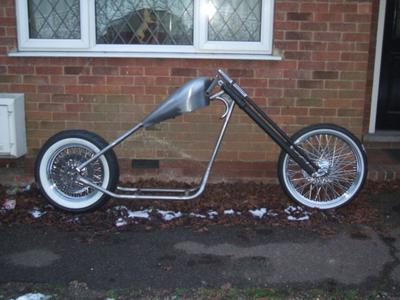
Small and medium-sized CM-Ts, Custom-CX and CBs, LTD-Zetten, GS (X) -Suzukis as L-Version – the Versoftchopperung crawled up the displacement ladder, stopped at nothing and in places sprouted remarkable flowers.Įxample? Suzuki GSX 1100 L, a state-of-the-art sixteen-valve inline four-cylinder flagship with an unbelievable 100 hp at the time, garnished with a playful drop tank, step sofa, wild armpit aerator antler, 16-inch model and a shamelessly suggested sissy bar. The props that were common at the time (plush step bench, ergonomically questionable high handlebars, thick 16-inch rear wheel, drip tank and lots of chrome) found their way to pretty much every Yamaha, Suzuki, Kawasaki and Honda within a very short time. The good XS 650 became the Special, then the U.S. Starting with Yamaha, which back then was already synonymous with innovation. Whatever the reason, the chopper wave lapped and the big four Japanese surfed it busily. Maybe there was something in the drinking water at the time? Contemporary witnesses can certainly contribute to answering this question. But at this point it was already an old camel. Some blame it on the cult film “Easy Rider”, which brought the “Chopper” based on the American model and the associated, supposedly liberal, hash-steaming attitude towards life into people’s consciousness. At the end of the 1970s, motorcycling was popular as a leisure activity, and the four great Japanese ruled the German market with modern in-line two- and four-cylinder engines that would be called naked bikes today and which at the time were simply motorcycles.

“Softchopper” and “Japancruiser” – be careful if you throw these terms around today, someone could get hurt.īut that was not always the case, because once, many, many moons ago, they were very popular. Everything that looks like long-stroke, relaxed comfort and does not come from Milwaukee, or at least Springfield, has been bogging its tires flat in the showrooms for some time. Of course, ABS could easily be retrofitted, and the capacity giants, which are already completely under-challenged in terms of performance, could certainly be cleaned up to some extent without too much effort. And the whole clan of free-riders, wide-riders, long forks, high-handlebars and low-seat benchers from the Far East are lacking sales figures. Why? Intruder-Suzukis, Vulcan-Kawasakis and Midnight Star-Yamahas are missing the compulsory ABS. And this is how it will now be for the choppers and cruisers from Japan. That’s how it goes with many large four-cylinder engines, that’s how it was with the six hundred super sports cars. Former burners, which over the years have shrunk to glower and then to mica, but have been dragged on again and again – after all, all segments want to be served – are thrown out. S.o We, and perhaps you too, are now fed up with the topic of European exhaust and noise regulations – in the course of the new standard, interesting shifts in the motorized two-wheeler market occur every few years.


Euro 4 practically sets the genre to the beginning – time for a deeper look back.

Once they were trendy, today they are as out of fashion as cola red, foxtail and armpit hair – soft choppers and cruisers from the land of the rising sun are a multi-faceted, at times surprisingly successful phenomenon. Rise and Fall of the Japan Chopper Deeper review Picture gallery: History of Japan Chopper.


 0 kommentar(er)
0 kommentar(er)
